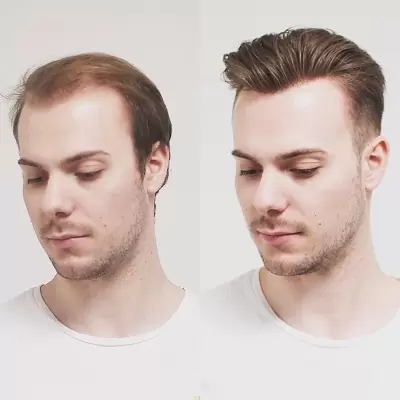Hair Replacement - Abu Dhabi - Dubai
Hair replacement, also known as hair restoration or hair transplantation, is a surgical procedure aimed at restoring hair growth in areas where hair loss or thinning has occurred. It is commonly used to address male pattern baldness but can also be effective for women with hair loss issues.
The most common technique used in hair replacement is called follicular unit transplantation (FUT) or strip harvesting. Here's an overview of the process:
- 1. Donor Area Selection: Hair is taken from a donor area, usually the back or sides of the scalp, where hair growth is permanent and less prone to balding.
- 2. Donor Strip Removal: A strip of scalp containing hair follicles is surgically removed from the donor area under local anesthesia. The incision is then closed with stitches or staples.
- 3. Graft Preparation: The strip of scalp is divided into small grafts, each containing one or a few hair follicles. These grafts are carefully prepared for transplantation.
- 4. Recipient Site Creation: The surgeon creates tiny incisions or recipient sites in the area of the scalp where hair is to be transplanted. The placement of these sites is crucial to achieving natural-looking results.
- 5. Graft Placement: The prepared grafts are meticulously placed into the recipient sites, ensuring proper angulation, direction, and density to match the patient's natural hair growth pattern.
- 6. Healing and Recovery: The transplanted hair follicles enter a resting phase and shed within a few weeks of the procedure. New hair growth typically begins within a few months, and full results can be seen within a year.
It's worth noting that advancements in hair restoration techniques have led to less invasive procedures, such as follicular unit extraction (FUE). In FUE, individual hair follicles are harvested directly from the donor area without the need for a strip removal. This technique leaves tiny, nearly invisible scars and offers a quicker recovery time.
Before considering hair replacement, it's important to consult with a qualified hair restoration specialist or a dermatologist who can evaluate your specific case, discuss the available options, and provide personalized advice based on your needs and expectations.

